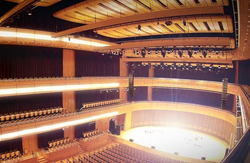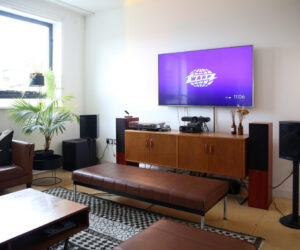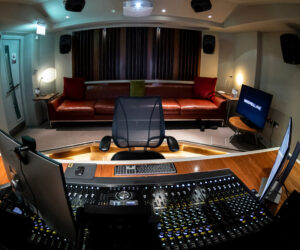The Sage Gateshead, an iconic multi-arts building in the northeast of England (Gateshead Quays, UK), is celebrating its 10th anniversary with a new sound reinforcement system in it’s 1,700-seat Main Hall that’s headed by RCF HDL 20-A line arrays.
The new system was installed by British contractor Nitelites following a period of evaluation by the facility’s head of technical operations, Chris Durant, during several occasions when HDL20-A arrays were flown on a temporary basis to support the house system.
Home to Royal Northern Sinfonia and host to a vast concert agenda that includes jazz, folk, country and rock, the venue’s original system had rarely kept pace, so Nitelites found themselves increasingly hiring in its RCF TT+ and HDL rigs.
Eventually managing director Jamie Moore proposed that flown HDL 20-A arrays be installed on a permanent basis, both to save the Sage Gateshead hire costs and to enable the system to be purpose-tuned via a series of preset scenes accessed via a custom panel.
Nitelites co-director Andy Magee states, “With HDL we were confident we could get even coverage around the building, whether for speech or classical. The system is so easy to deploy, quick to rig and fast to wire.”
The new PA covers the main floor and two balcony tiers, split into 12 coverage zones. Nitelites recommended 12 HDL20-A enclosures for each flank, with three more HDL 20-As per side for portable ground stack on custom dollies, atop an RCF SUB 8004 subwoofer.
Another sub stack includes three SUB 8006s in a reverse cardioid pattern (one rear facing), with an HDL 10-A on top. In addition, HDL 10-As supply underbalcony fill and front fill. On the sides of the main hangs are four discreet RCF TT08s for out fill.
Durant adds that he believes that Nitelites’ attention to detail in tuning the system has enabled them to get a higher level of performance from the system. “We’ve had pretty much every big system in here, and our new in-house RCF house rigs sounds better because temporary systems have to be set up so quickly,” he says. “This been tuned to within an inch of its life.”
Durant presented Nitelites with a matrix containing different performance scenarios for which gain structure presets were created. Via the DSP, zones can be turned on and off at will.
“It’s far more efficient than changing the angles of the boxes every time we needed a new configuration,” he notes, adding, “The great thing about the HDL 20-A is that it goes down to 55 Hzm so for jazz and classical there are no subs at all. In fact the first time I heard it I thought our subs had been switched in by mistake.”
The new system has “future-proofed” performance requirements for the foreseeable future. “We are now making engineers aware that they can leave their kit on the truck,” Durant concludes.




















